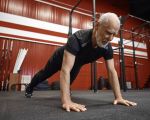- 1-Understanding-the-Concept-of-Training-Smarter
- 2-Key-Strategies-for-Smart-Training
- 3-Incorporating-Efficiency-Into-Your-Workouts
- 4-Real-Life-Examples-of-Training-Smarter
- 5-Common-Mistakes-to-Avoid
- 6-Enhancing-Results-with-Professional-Guidance
Understanding the Concept of Training Smarter
Many fitness enthusiasts focus on working harder in the gym, often equating longer or more intense sessions with better results. However, the key to sustainable progress lies in learning how to train smarter not harder. Training smarter means optimizing your workouts by focusing on quality, technique, and recovery rather than simply increasing volume or intensity.
This approach emphasizes targeted exercises, efficient scheduling, and mindful rest, allowing you to achieve better gains without burnout or injury.
Key Strategies for Smart Training
Adopting smart training techniques involves several fundamental strategies:
- Prioritize Form Over Reps: Correct technique maximizes muscle engagement and prevents injuries.
- Use Progressive Overload Intelligently: Gradually increase weights or difficulty to challenge muscles without overtraining.
- Incorporate Rest and Recovery: Schedule rest days and use active recovery to help muscles rebuild stronger.
- Focus on Compound Movements: Exercises like squats, deadlifts, and presses recruit multiple muscle groups efficiently.
- Track Your Progress: Logging workouts helps identify what works best and when adjustments are needed.
These strategies help create a balanced routine that supports consistent improvements.
Incorporating Efficiency into Your Workouts
To truly train smarter, it’s important to streamline your workout sessions:
- Plan Ahead: Have a clear workout plan tailored to your goals to avoid wasted time.
- Utilize Supersets and Circuits: Combining exercises keeps your heart rate up and reduces gym time.
- Focus on Intensity Over Duration: Short, intense sessions can be more effective than prolonged workouts.
- Listen to Your Body: Adjust intensity and volume based on how you feel to prevent overtraining.
Efficiency ensures that every minute spent exercising moves you closer to your fitness goals.
Real-Life Examples of Training Smarter
Emma, a busy professional, struggled to find time for lengthy gym sessions. By learning how to train smarter not harder, she shifted to focused 30-minute workouts using compound movements and supersets. Within weeks, Emma noticed improved strength and endurance without feeling exhausted.
Similarly, Carlos incorporated smart rest days and tracked his progress meticulously. This approach helped him break through a plateau that months of intense training had failed to overcome, showing how efficiency can trump sheer effort.
Common Mistakes to Avoid When Training Smarter
Even with the best intentions, some pitfalls can hinder smart training efforts:
- Neglecting Warm-ups: Skipping warm-ups increases injury risk and reduces performance.
- Ignoring Recovery: Overtraining leads to fatigue and stalled progress.
- Chasing Quick Results: Sustainable gains require patience and consistent effort.
- Using Poor Technique: Sacrificing form for heavier weights is counterproductive.
Being aware of these mistakes helps maintain a smart, effective training routine.
Enhancing Results with Professional Guidance
For those seeking to optimize their training, consulting experts can make a significant difference. Fitness offers personalized plans, coaching, and quality equipment recommendations tailored to your goals. Leveraging professional insights ensures that you learn how to train smarter not harder with confidence, minimizing guesswork and maximizing results.
Investing in expert support is a powerful step toward achieving your fitness aspirations efficiently and sustainably.








